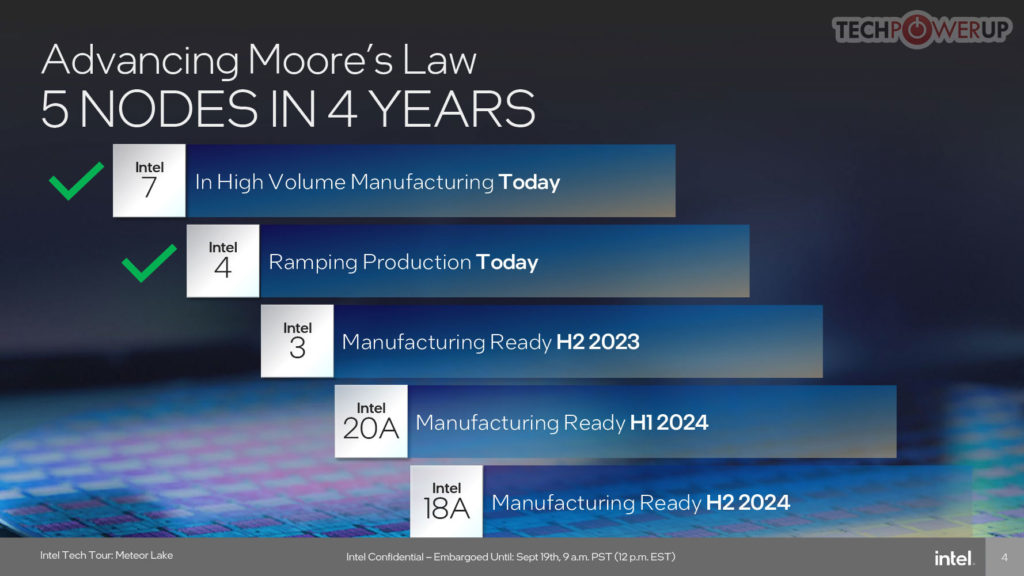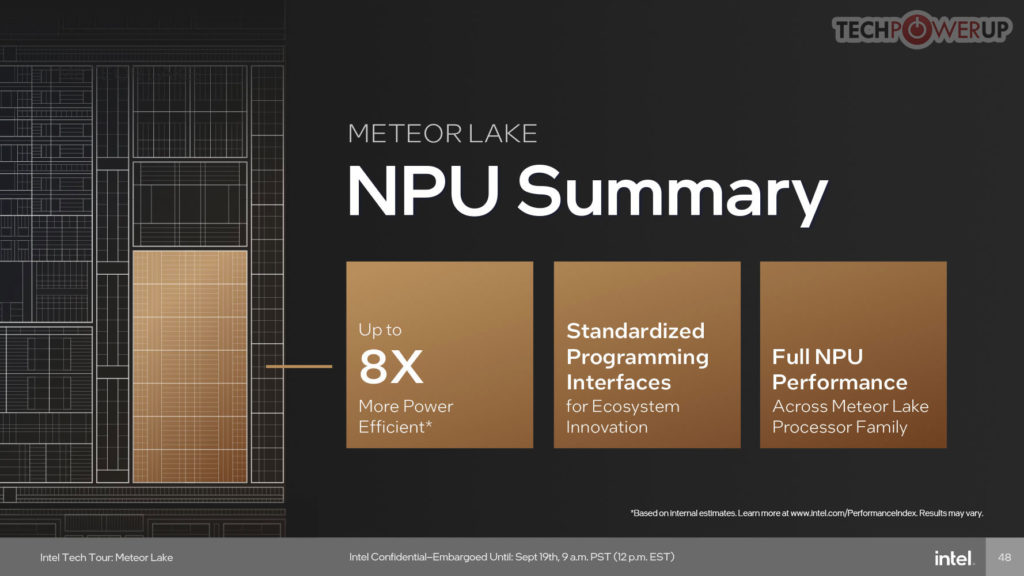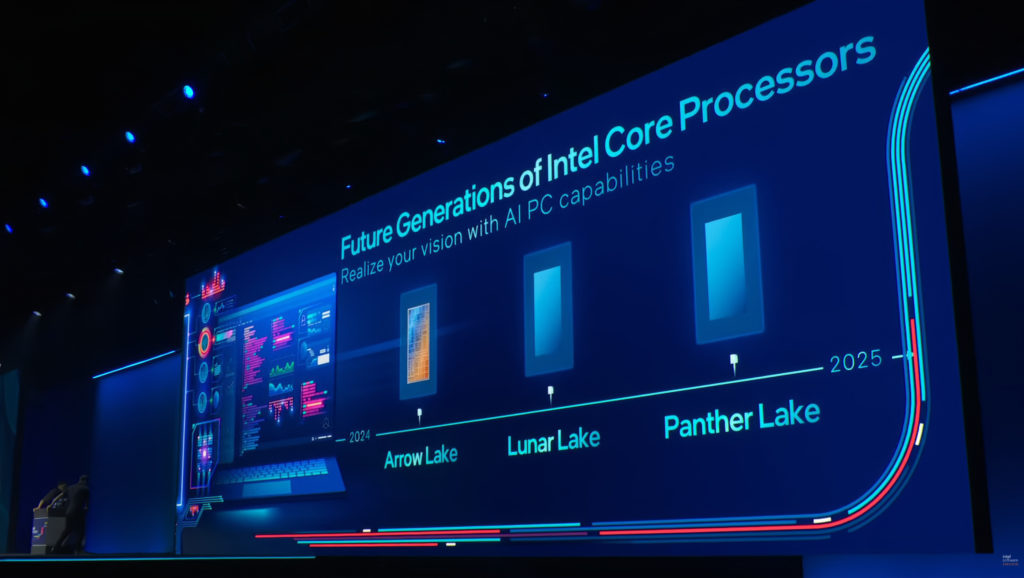Intel held a conference today where CEO Pat Gelsinger unveiled new technologies and products. There were also Meteor Lake processors, but unfortunately only slightly. All we know is that it will go on sale (they won’t be available in laptops for desktops) on December 14th. However, fortunately, in addition to the presentation itself, we received a separate, very informative video and additional slides through Techpowerup magazine, which present the new architecture in more detail.
Compared to Raptor Lake, Meteor Lake does offer a lot of new features. In any case, the chiplets are probably the largest, because until now (unlike AMD) Intel has used a monolith. Meteor Lake is divided into several so-called tiles, namely the graphics part, SoC, I/O and the computing tile itself. For the latter, the company is using its new Intel 4 manufacturing process, which promises 20% more efficiency than Intel 7. For the rest of the tiles, it used a combination of older Intel processes and external TSMC processors.
By the way, Intel confirmed at the conference that the development of new processes continues successfully and so far everything is going according to plan. Production of the Intel 3 should begin this year, the Intel 20A in the first half of next year, and the Intel 18A in the second half of next year, thus completing the entire 5-production plan in 4 years.

But let’s return to Meteor Luck. The CPU tile itself contains new P-cores labeled Redwood Cove, which, however, practically only provide better efficiency compared to Golden Cove. Slightly more interesting are the new Crestmont E-cores, which promise a 4-6% increase in IPC over the previous generation Gracemont cores.
The computing part can contain up to 6 P-cores and 8 E-cores, but that’s not all. The SoC tile also offers a so-called low-power island, where we can find 2 more low-power E-cores. They are built on the same architecture and are mainly used to further save battery power. If just these two cores are enough for performance, the SoC tile will remain on, but the CPU portion can be turned off completely.
This is also due to the new scheduling system, the so-called Intel Thread Director. While Raptor Lake favors P-cores for higher loads and E-cores for lower loads, Meteor Lake does it differently. 2 LP E-cores on the SoC will first try to do the necessary work, if this is not enough, then a computing tile with E-cores will be included, and if this is not enough, then P-cores will join the action.
The SoC tile hides another interesting thing – a neural processing unit (NPU), that is, a special chip for AI calculations. It promises high performance and, above all, very good efficiency: according to Intel, up to 8 times higher than using CPU + i GPU.

Finally, we’ll look at the GPU, which marks a huge leap over the previous generation. The chip is built on the Alchemist architecture (like the desktop Arc variants) and compared to the latest iGPU from Intel promises double the performance at the same consumption, which is taken care of by 8 Xe cores but 8 ray tracing. units are also available. From the point of view of the media engine, you can (as on the desktop Arc) count on support for the AV1 codec in the form of decoding and encoding.
The new series does involve quite a few changes, which is why Intel decided to reset its numbering. He removed the “i” and the new processors will be called “Intel Core Ultra.” In any case, we don’t know the exact models yet.
In conclusion, it should be added that at the presentation Intel mentioned other architectures that it plans for the coming years. Next year we will see Arrow Lake, which will also appear on desktop computers and will be built on the Intel 20A process. The same year will likely see Lunar Lake (it was even shown in action), which is aimed at laptops only, and in 2025, Panther Lake is expected to arrive with Intel’s 18A process technology, which is also aimed at desktops.

Source :Indian TV







